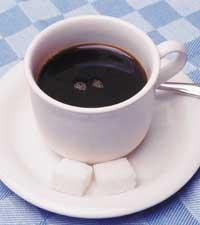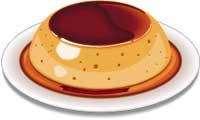The sweetest
2003/09/21 Atxotegi Alegria, Uhaina - Elhuyar Zientziaren Komunikazioa

By the year 600 the Aztecs and Mayas already knew chocolate. They took the baba from the cocoa tree and made a mixture called xocoalt. According to a Aztek legend, cocoa seeds come from paradise and man gets the power and honesty by eating them.
In 1519 Hernán Cortés tried chocolate and decided to bring it from America. A century later it was the Jews who brought the chocolate to Euskal Herria. In fact, in 1609 the Jews opened in Baiona the first locals to treat cocoa. Louis XIV ate the chocolate that was made in Baiona and from there it was distributed to all the peoples of Europe.
Cacao tree
Cocoa comes from the fruit of the cocoa tree. It is a tree to be taken care of, since the wind and heat kill easily. It grows mainly in tropical populations. The fruit is long and of hard bark, with 15-40 seeds of 13 cm each and surrounded by liquid cocoa butter. To make chocolate, we must first distinguish cocoa seeds and cocoa butter from each of the fruits.
But how do you get chocolate from those fruits or seeds? Chocolate is a blend of cocoa and other ingredients. In total there are three main types of chocolate: black chocolate, milk chocolate and white. Black chocolate contains 30-35% cocoa, the other 8-14% dry cocoa without fat and cocoa butter (18%). Milk chocolate contains, in addition to cocoa (20-25%), sugar (25-55%), milk (10-20%) and fatty components (25%). Finally, white chocolate, with cocoa butter (20%) with milk (14%) and sugar (55%).
In addition, we must take into account what food is rich. It contains proteins, lipids, carbohydrates, fiber, potassium, magnesium, calcium, phosphorus and sodium, among others.
Influence of chocolate

Chocolate, in addition to cocoa, sugar, lipids and vegetable proteins, contains other substances that act like tebromine, caffeine, phenyletilamine and serotonin. These substances affect our psychic.
Tebromine accelerates the nervous system, facilitates muscle effort, increases appetite and makes the heart work. For this reason, many athletes have the habit of eating chocolate before competing.
On the other hand, caffeine, in addition to extending resistance to fatigue, increases intellectual activity.
And finally, if we eat chocolate, we lose less serotine and that has the same influence as antidepressants. Chocolate is not, therefore, any food. It is often said that it is a gift that we receive as a prize, that puts us in good humor, that helps us overcome the despair and that is stimulating. It also influences the theme of love: we become more affectionate and affectionate with the couple and is also aphrodisiac. There is no more to see the decision made by the Jesuit linguist Larramendi when he became aware of this kind of reaction: he forbade the monks of the convent to eat chocolate, he altered them too much.
New chocolate!
The recent approval by the European Union of new ingredients for the production of chocolate will soon entail the commercialization of new types of chocolate. What does the novelty consist of? They can replace cocoa butter with other tropical vegetable fats such as illipe, palm oil, shea or mango bone. So far these six types of fats were used in Denmark and Britain, but are not accepted in France.
From now on, the work of the chemicals that study the chocolate that is marketed in France will change and is complicated with the intention of rejecting this type of butter. In fact, all of these fats or butter have a lot of similarity. The Illipé butter is the most similar to cocoa butter and palm oil is the most different.

So far, the European Union has not prohibited chemically modified fats due to their similarity with cocoa butter. But in countries that do not support different types of fats, what is the work that chemicals should perform?
The only way to separate fats is to know the concrete components of the mixture. To do this, in addition to separating all the molecules, it is necessary to determine the quantity of each of them. At present, in France, for example, the amount of butter legally incorporated into chocolate must be less than 5%. The chemicals do not allow the marketing of chocolates with more butter.
On the other hand, they also do tests to know where cocoa comes from. To do this, they analyze the metals present in cocoa: calcium, phosphorus, magnesium...
From now on, without realizing it, we will eat more and more chocolate of the same flavor but with different ingredients. Yes, like all things, although chocolate has many beneficial properties, it is convenient to eat in size. Do not say to us that you have greatly fattened!
Published in 7K.

Gai honi buruzko eduki gehiago
Elhuyarrek garatutako teknologia






